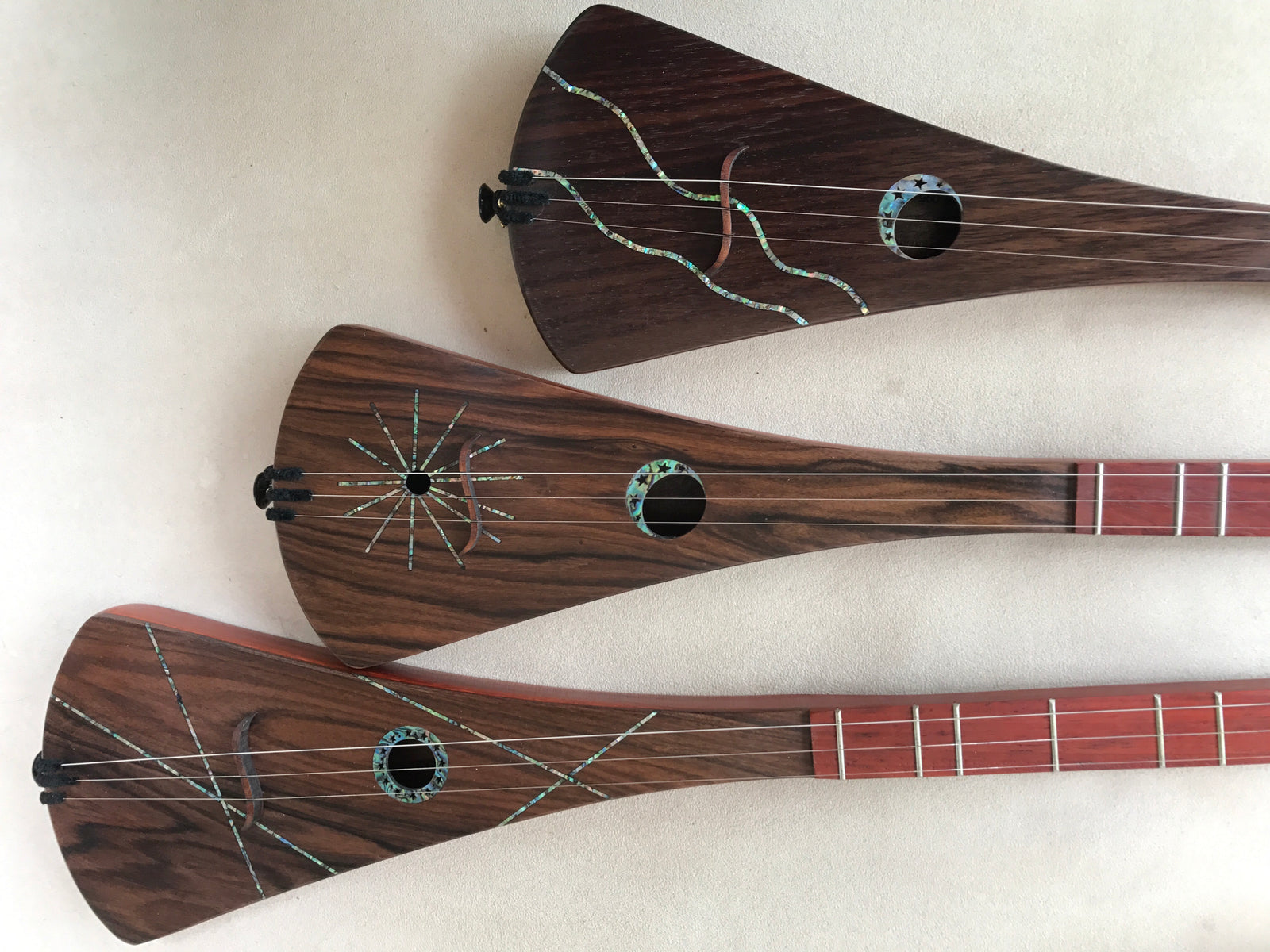There are many fun things that two Strumsticks of the same key can do together, before you even get to playing actual songs. This page explains them all, and gives MP3 examples of them.
Here is one sample:
MP3 Example 1 (Two G Strumsticks Together)
See the descriptions of all the examples on The Two Strumsticks Together page.
Don't have another Strumstick player to play along with? We also have pre-recorded backing tracks for you to jam with (one for D, and one for G).
There are also instructions for how a D and G Strumstick can play together too.
To play with other instruments, two things have to happen first.
a. The two instruments must be in tune with each other, and
b. The two people must agree to play in a key that the Strumstick can play in (usually D for a D Strumstick and G for a G Strumstick).
If both instruments tune to an electronic tuner, thats the easiest. If playing with piano, have the piano give you D, A, D notes to tune to (or G, D, G for the G Strumstick).
1. Strum along, open Strings. The very easiest thing for Strumstick to do, is to simply strum the open strings along with the guitar (etc) that is playing the song. The guitar will change chords, the Strumstick will not, but the drone of the Strumstick makes an interesting texture with the changing chords of the guitar (etc). Play a steady beat that matches the songs tempo, or a strumming rhythm that sound like it fits with what the guitar is doing. Test and experiment, rehearse. You are making music. Do not feel that you have to play everything exactly like the guitar does. Listen for what sounds pleasing together, even a little.
2a. Add a few Fretted Notes. Find a fretted note that sounds like it goes with each chord the guitar is playing; play all three strings plus the fretted note that goes with each chord. This is like making the tiniest of chord changes.
2b. Having found some fretted notes that fit, try Minichords built on those notes See Minichords here (with videos) and also here (pdf)
3. Play the Regular Chords. If you have practiced the chords the song uses (in your Strumsticks key), you can play the full chords along with the guitar.
See Chords here
4. Play Melody (or lead!). If you can figure out the melody to the song on strumstick, or a melody part that goes along ok, you can play single notes along with the guitar chords. You also could strum all three strings while you finger the Melody notes.
Useful Tips:
Listen to what the other person (or persons) are playing, not just what you are playing. You would be amazed at how many otherwise good musicians forget to do this.
Play Less than you are able. When you start to play with others, or to perform, abilities that seem so solid at home suddenly get much harder. That is true at all levels of playing by the way. So don't try techniques that are at the top of your game, as you start with others. Think quiet, unobtrusive; sounds that fit in. If you can't seem to stay in step with the rhythm, play less complex things, and above all listen (to both yourself and others) as you play.
Patient Friend. Start off with a patient and supportive friend on the other instrument, and describe what you are trying to do. All musicians were beginners, and everybody, no matter how great, is working on new stuff at the limits of their current ability. And every musician has been lifted by patient friends and teachers.
Make Mistakes. It's the only way to get past mistakes. If you can make your mistakes with a supportive friend, and quietly, so much the better, but make them.
Sales, New Products, Instructions, Videos, and Free Offers, Useful Content.
